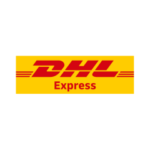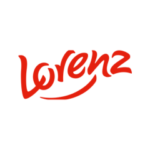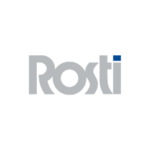One of the definitions of Lean Management is to deliver the highest possible value to the customer using the least number of resources. Such a target is secured, for example, by using the talents and ideas of employees at all levels. Therefore, the inefficient use of resources, including human resources, could be worth addressing to streamline our organisation.
Enterprise resource management: when is it ineffective?
The cause of process inefficiency is waste (Lean Management refers to it as Muda). One of its types is unnecessary data processing which does not add value, e.g. processing of data which is not necessary to produce a service/product, ineffective meetings, inefficient group work and compiling unnecessary reports and statements. Therefore, it would be good to consider what data we need, in what structure and from what time period. Waste can also be called overproduction, for example printing and compiling reports for stock.
- Should you collect data just for the sake of collecting them?
- Should you compile endless reports that get lost in the masses of information?
Let us collect only the necessary data and publish them in comprehensible reports. The idea is to provide the right information so that we can make effective decisions. Decisions that address problems and implement good practices. Decisions which, in the PDCA (Plan-Do-Check-Act) cycle, are the final, fourth step, to implement change. Before we make decisions, in step one (PLAN) we set goals, plan and organise the work. In the next step (EXECUTE), we carry out the tasks, coordinate the work and support the team in its implementation. Before we implement changes and good practices (CHECK), we verify and study the results and audit the processes. To do this, we need to be able to effectively analyse the data provided and draw the right conclusions. Good quality reports and charts can help us to do this.
Gantt chart and report panel
We are supported in the development of quality reports by IT systems for online closed-loop production management (PDCA idea). Systems which take care of our data, which allow us to handle technological data, make MRP II balance, generate production orders, schedule technological operations and manage production logistics, taking into account product genealogy and supporting auxiliary processes. An important function of such solutions is also production monitoring and reporting. It is obvious that the whole organisation does not use the same reports. Every executive, manager and lower-level employee needs selected information. Therefore, an important feature of reporting systems is that reports are available in thematic groups. Each group then has dedicated analytical reports. In my study, I have divided reports into those related to the machine, to the employee and to orders. In each group, I have highlighted those that, in my opinion, should be a standard to support production management. Therefore:
- Machinery
- Online: The report presents all activities recorded in the context of machines from the department. The user can verify the status of machines (how many are running and how many have breakdowns) and current problems;
- Work history: This report shows the history of recorded events on machines from the selected department;
- Downtimes: The report presents the history of recorded failures for machines in the selected department. On its basis, the user can learn about the most frequent causes of failures (e.g. by using a Pareto chart) and take appropriate preventive measures;
- Changeovers: The report shows the history of recorded changeovers on machines in the selected department;
- Work plan: The report shows the work plan on individual machines in the preselected department for the selected day;
- Shortages: The report presents the history of recorded shortages for operations carried out on machines from the selected department. On its basis, the user can learn about the most frequent causes of deficiencies (e.g. by using the Pareto chart) and take appropriate preventive measures;
- Employees
- Online: The report presents all activities recorded in the context of employees from the department. The user can verify the status of employees (how many employees are present and how many are absent and idle) and current problems;
- Work history: This report shows the history of recorded events by employees from the selected department;
- Non-production: The report shows the recorded non-production (indirect) activities by employees who are assigned to a preselected department. On the basis of this report, it is possible to analyse the incidence of such activities and take further steps if there are too many of any type of activity;
- Orders
- Technology verification: The report presents a summary of recorded production and changeover times for production operations which were planned in the selected time period. The report gives the possibility to analyse the recorded production and changeover times and compare them with the planned execution time.
Gantt chart: advantages
It is worth mentioning the advantages of Gantt charts. Visualisation of data on a Gantt chart allows faster analysis, drawing conclusions and reacting to the current status of production. Almost any data set can be presented on a Gantt chart, including multi-level charts which combine data from different interrelated data sets. Examples of such charts are:
- a chart showing the planned fulfilment of production orders with the possible view of the planned duration of individual operations;
- a chart showing the planned implementation of production operations in terms of machinery;
- a chart showing the graphic progress of employee notifications on a timeline;
a chart showing the graphic progress of employee notifications on a timeline.
Company management: effective decision-making
Therefore, we may be tempted to say that the creation and use of appropriate, transparent charts and reports ensures more effective use of the potential of the organisation’s resources and faster response to events in the production area. The system which allows it is the latest product of eq system, XPRIMER 4.1. The application of XPRIMER 4.1, which integrates information from various production areas into one report panel, is an option of complementary control of all production activities in a company. Most often, the production of a finished product is based on several or even dozens of operations performed by different people, at different positions, and nowadays also by industrial robots. People working on machines have different competences and predispositions. The production lines are made up of equipment from many manufacturers, whose control is in each case provided with a different protocol. There is, therefore, a need for general, simple supervision of all processes.
XPRIMER 4.1 supports company processes
Tracking and visualisation of production in progress, control of actual working time of machines and people, recording causes of downtime, inventory updates, electronic flow of technical documentation and many activities of importance to production (from the stage of purchasing raw materials to the stage when the finished product leaves the factory) can be organised in such a way that access to data is provided from a single workstation, in a single reporting panel. And this very process is supported by XPRIMER 4.1. Having in mind the use of analytical tools, it can be estimated that on the basis of data collected by them and by using dedicated advanced IT solutions, it will be possible to predict unfavourable events and to eliminate or minimise failures. The operational excellence of the company will be increased. The implementation of business analytics makes it possible to increase timeliness in all its categories. It is easier to match people to planned tasks, optimise the load on production means and eliminate bottlenecks.
Artur Głodek expert in business analysis department of eq system
Have you got any comments or questions? Contact the author of the article via LinkedIn



































